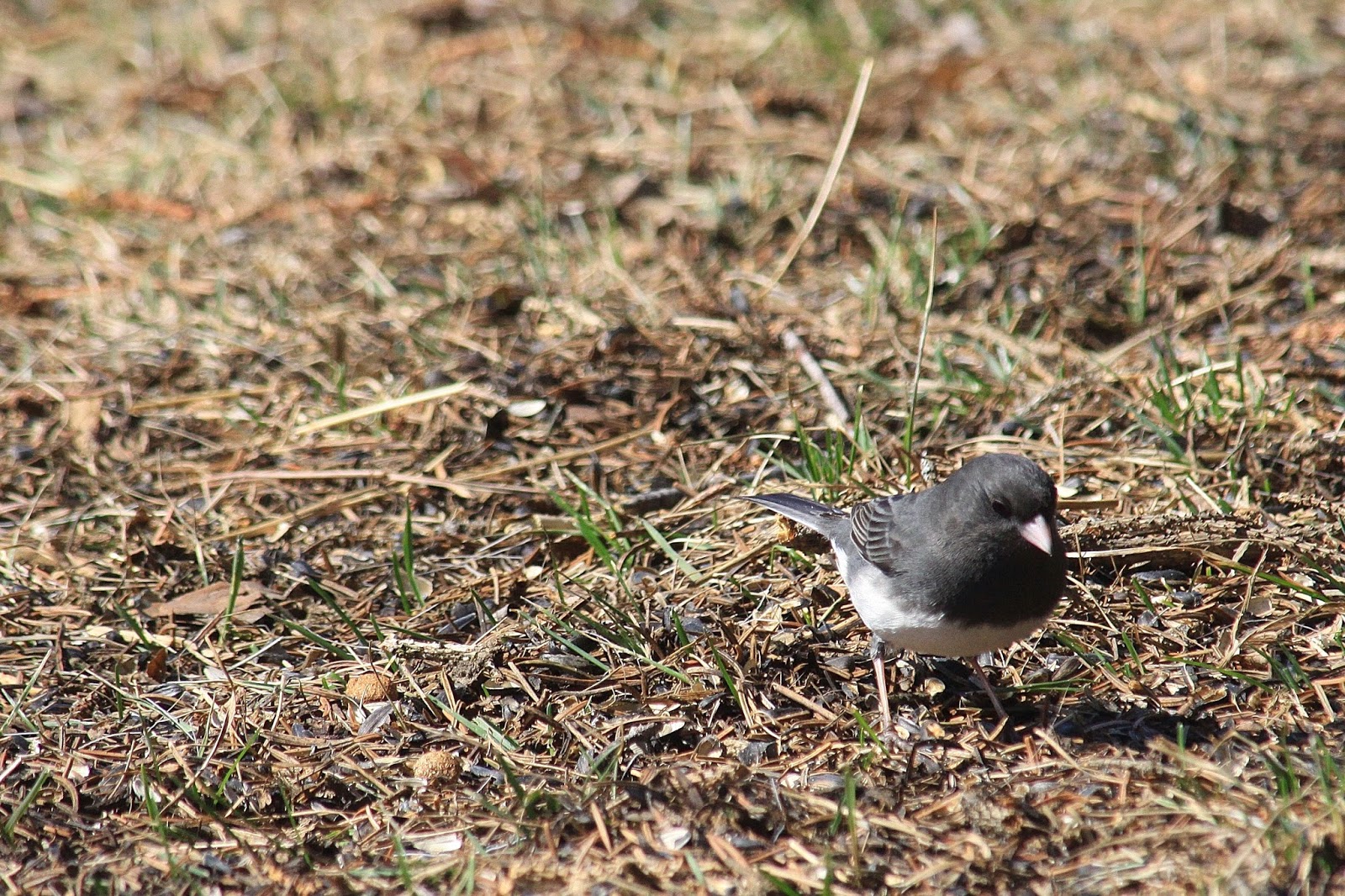Juncos by Kate Crowley
WINGIN’
IT
By
Kate Crowley
In the last two weeks
we’ve seen a “changing of the guard” in our front yard. Gone are the big flocks of blue jays and
chickadees and in their place we have a very large flock of Dark eyed juncos -
the so called ‘snowbirds’. We have also
seen robins, a grackle, eastern phoebe, and purple finches, but they have
mostly been transitory. The juncos have
settled in for the time being, spending all day foraging on all the spilled corn
and seeds that piled up in the layers of snow.
Members of the sparrow
family, they are flighty little birds, wearing somber grey feathers. In reference to its nickname, its plumage has
been described as “leaden skies above, snow below”. The males have a dark grey
head and neck; while the back and tail feathers are a slate color (they are
also known as Slate-colored juncos).
Females tend to be more of a brownish grey on their back. Both genders
have pale pink bills, a dark brown eye and white bellies; their only bit of
extravagance is their outer white tail feathers, which flash when they fly up. These tail feathers may help the flock locate
one another and stay together. As easily
as they disperse, so do they settle back down on the ground and resume feeding.
The juncos are
temporary visitors. They have been
spending winter further south, some in Minnesota. Many of these are the males,
who accept the risk of our difficult winters in order to have a better chance
in the spring of getting to the best breeding territories first. For now, they are biding their time, filling
up their fat reserves for the journey to the northeastern part of Minnesota and
further into Canada where they will nest in the coniferous forests.
One of the things I
love best about juncos is their sweet, twittering calls. When we go outside on these early spring
mornings, the trees are filled with this sound.
It is such a nice change from the chickadees and blue jay calls that
we’ve been listening to for the past five months and a precursor to even
sweeter songs to come.
Juncos are found in all
of the lower 48 states and a recent estimate set their total population around
200 million. There was a time when the Juncos
were thought to be four different species, but it has since been determined that
they all belong to just one - the Dark-eyed.
They can be divided into four forms, which include differences in
plumage color and geographic locations.
The Oregon, Grey-headed, and White-winged are all found on the western
half of the country. This was one of those cases where the ‘listers’ among bird
watchers were disappointed by the new classifications, because it reduced their
official lists by three, although any truly interested birdwatcher enjoys
looking for these variations just as much as they did before change.
Like any good flocking
bird, the Dark-eyed juncos feed, fly and roost together. This last activity can be lifesaving, especially
cold nights. The birds will generally
choose thick stands of conifers where they are well shielded from the wind. Doing this has been shown to reduce their
nightly energy expenditure by 10%. That
is enough reduce 1.3 hours of feeding time the next day.
The flocking behavior
also gives each individual a slightly better chance of survival when the
sharp-shinned hawk swoops down out of the sky.
As the little birds scatter they cause confusion for the hunter and
thereby have more of a chance to escape.
The sharp-shinned remains in our neighborhood and when I look out the
window and see no birds moving around at all, I know it has been or is
nearby.
The juncos are part of
the passing avian parade; one that we look forward to each year. The bluebirds can’t be far behind.
By the way - the junco name which is a family name in Spain means a reeds or rush - juncos is genus for rush.




Comments
Post a Comment